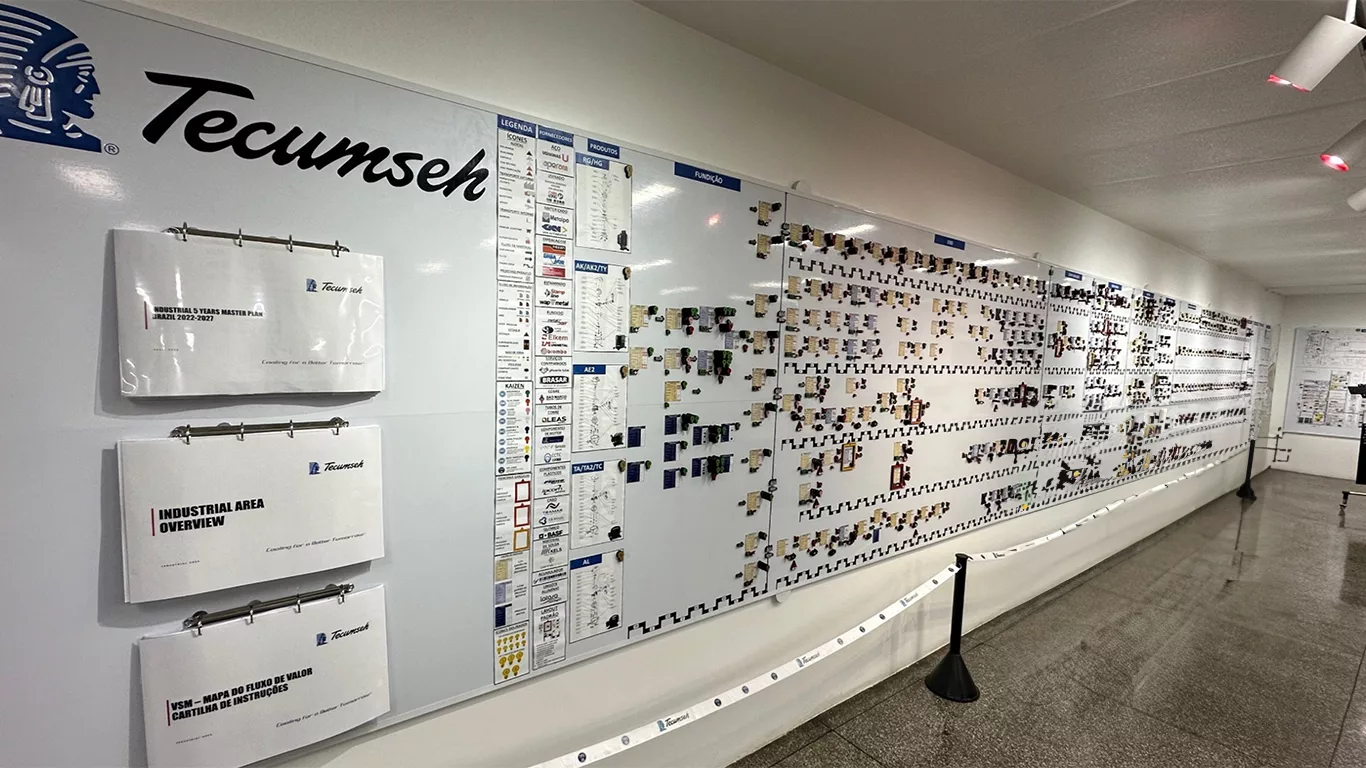In this comprehensive exploration, we analyze Tecumseh do Brasil’s inspiring journey towards operational excellence. This case study is essential for leaders seeking to revolutionize their company’s operational efficiency and culture. It aligns seamlessly with ongoing discussions at the World Economic Forum about transforming manufacturing and supply chains. Tecumseh’s approach to operational excellence reflects a broader development towards innovation and responsible growth in this sector. As businesses strive for sustainability and adaptability in a rapidly changing world, Tecumseh’s journey provides a practical example of how it can actually work.
Achieving operational excellence is a goal for many organizations, yet it remains a complex challenge. The main obstacle lies in overcoming cultural inertia, aligning strategies, and ensuring robust employee involvement.
The Complex Path to Operational Improvement
- Cultural Resistance to Change: Employees’ comfort with existing practices often hinders the adoption of new methodologies.
- Lack of Unified Manufacturing Strategic Vision: Without a clear, overarching vision, efforts become fragmented and less effective.
- Underestimating the Role of Employees: Employees are crucial in any operational change, yet their involvement is often overlooked.
- Challenges in Integrating New Processes: Introducing new processes without proper integration disrupts existing workflows.
- Short-Termism: Many organizations focus on immediate results, neglecting the long-term potential of a Continuous Improvement approach.
Tecumseh do Brasil’s solution to overcome these challenges lied in developing a comprehensive approach based on Continuous Improvement. Eduardo Almeida, Senior Operation Director Americas, reflects, “Our journey started with the creation of our unique Tecumseh production system, which was essential in our transformation.”
Step 1: Establishing a Custom Operational Framework
Tecumseh’s strategy involved developing a bespoke production system, leveraging its workforce’s collective experience and wisdom. This approach was pivotal in embedding a culture of Continuous Improvement. Almeida notes, “Our system is simple yet effective, connecting all KPIs through routine management.”
Step 2: Building a Resilient and Disciplined Culture
The company’s success is attributed to a culture for High Performance Deliveries that embraces challenging goals and disciplined execution. “The courage to set challenging goals and the discipline to achieve them were key,” Almeida asserts, highlighting the importance of this cultural shift.

Step 3: Implementing Interactive Tools for Continuous Improvement
The introduction of an interactive Value Stream Mapping (VSM) system was a game-changer. Almeida shares, “Our interactive VSM transformed how we track and implement improvements, making the process inclusive and engaging.”
Understanding Value Stream Mapping (VSM)
Value Stream Mapping is a Lean-management method for analyzing and designing the flow of materials and information required to bring a product or service to a customer. Tecumseh’s innovative approach to VSM involved using magnetic symbols on a large board, allowing changes to be made in real-time. This dynamic version of VSM not only made the process more visual and accessible but also encouraged continuous input from all levels of staff, fostering a truly collaborative environment.
Step 4: Strategic Alignment of Actions
Aligning daily operations with the broader strategic vision was crucial. “Our goal to integrate our two major factories in Brazil exemplifies this strategic alignment,” Almeida explains, emphasizing the importance of this step.
Step 5: Continuous Evaluation and Adaptation
Regular assessments and willingness to adapt are pivotal. “Our semi-annual reviews and regular events help align our actions with our strategic goals, adapting to new challenges,” Almeida remarks.
Commitment to sustainability, relentless innovation, and responsible growth
The transformation led to significant improvements in performance and safety. Almeida observes, “The transformation from a low-performing, high-risk environment to one of excellence demonstrates our commitment to operational improvement.”
Given the economic shifts happening in many countries, it’s time for leaders and organizations worldwide to rethink and reinvigorate their approach to operational excellence in a similar way. Embracing the principles of Continuous Improvement, employee engagement, and strategic alignment is not just a pathway to efficiency; it’s a commitment to sustainability, relentless innovation, and responsible growth.
Tecumseh’s journey provides valuable insights for operation-focused companies around the globe. The principles of customized operational frameworks, resilient cultures, innovative methods like VSM, strategic alignment, and continuous adaptation are universally applicable.
Embracing a culture of Continuous Improvement
The company’s approach to operational excellence may serve as a compelling template for transformation, resilience, and innovation. It serves as a beacon for organizations worldwide striving to enhance their operational efficiency. Eduardo Almeida’s experience and insights provide a roadmap for other leaders to follow, proving that with the right mindset, tools, and strategies, operational excellence is an achievable and sustainable goal.
The key takeaway for global leaders is clear: operational excellence is not just about implementing new processes or technologies; it’s about cultivating a culture that embraces Continuous Improvement, strategic alignment, and employee engagement. By learning from Tecumseh’s journey, companies around the world can embark on their own path to operational excellence, driving growth, sustainability, and long-term success.
See more on Sustainability
Find out more about improving this business area
See more on Operations
Find out more about improving this business area
